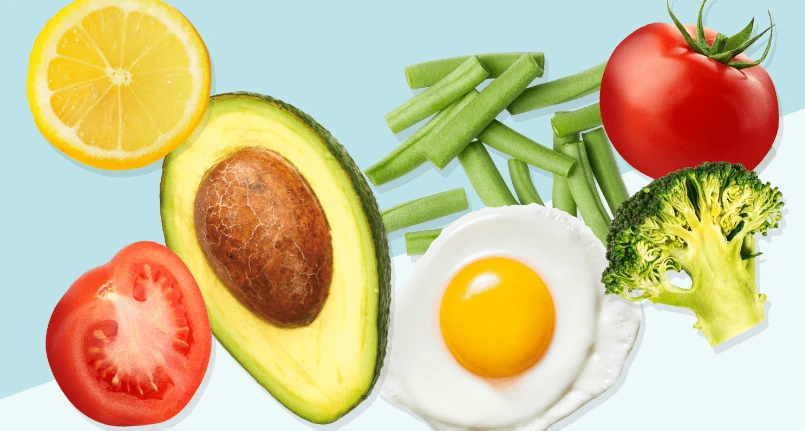Generality
The alkaline diet favors the intake of ” alkaline foods ” – such as vegetables, fresh fruit, fruit juices , tubers , nuts and legumes – limiting ” acidic foods ” such as cereals , meats and cheeses ; alcohol , carbonated drinks such as cola and very salty foods are also not recommended .
Alleged Benefits
The alkaline diet is based on the consideration that a diet rich in acidic foods ends up disturbing the body’s acid-base balance, promoting the loss of essential minerals , such as calcium and magnesium contained in the bones .
These alterations would favor the appearance of a mild chronic acidosis, which in turn would be a predisposing factor for some diseases and for a sense of general malaise.
The alkaline diet recommends consuming 70-80% of alkaline foods and 20-30% of acidic foods every day. This food model is much closer to the one followed by man until the discovery of agriculture than the current one.
How to tell when an element is acidic?
The acidity of a food is not measured in its fresh state, but on the ashes (minerals) which remain after combustion. These inorganic substances, therefore not metabolizable, can behave like acids or bases, and as such participate in the maintenance of normal organic pH.
Lemon , for example, has a very low pH, linked to the abundant presence of citric acid ; it is however considered an alkaline food because its acidic components are organic in nature and as such are easily metabolised by the body and eliminated with respiration, while the basic inorganic ones remain longer.
The elements that give rise to the formation of acids, decreasing the urinary pH , are sulphur, phosphorus and chlorine , while foods rich in sodium , potassium , magnesium and calcium are considered alkaline.
Pral
An index widely used to evaluate the acidifying or alkalizing characteristics of a food is the so-called PRAL (Potential Renal Acid Load).
From a practical point of view:
- foods with negative PRAL (PRAL – ) are potentially alkalizing (e.g. vegetables and fruit)
- foods with positive PRAL (PRAL +) have an acidifying effect (eg meat, milk derivatives , fish and egg yolk) .
In addition to the table below, we have prepared a handy online calculator for establishing the PRAL of a diet
Acidity of the organism
Our blood is slightly alkaline and under normal conditions its pH varies between 7.35 and 7.45. The maintenance of these values is given by the subtle balance between production and excretion of alkaline and acid substances, in which the kidneys and lungs participate above all . The respiratory mechanism eliminates or retains carbonic acid in the form of carbon dioxide, respectively increasing or decreasing blood pH , while the renal one eliminates or retains H+ and buffers.
| Body tissue | pH |
| Blood
Muscle Liver Gastric juice Saliva Urine pancreatic juice |
7.35-7.45
6.1 6.9 1.2-3.0 6.35-6.85 4.5-8.0 7.8-8.0 |
Regardless of diet, normal metabolism generates enormous quantities of volatile (eliminated by respiration) and fixed (eliminated by the kidney ) acids every day . In addition to the homeostatic systems already described, other biological mechanisms called buffer systems are involved, capable of effectively neutralizing part of the acids. Chief among them is the carbonic acid/ baking soda system . It is no coincidence that the latter is sometimes taken by athletes with the aim of buffering the acidosis induced by the anaerobic lactacid mechanism and prolonging fatigue tolerance.
The fact that during such an effort the organism increases pulmonary ventilation with the aim of eliminating the excess of carbon dioxide, therefore indirectly of hydrogen ions given by the dissociation of carbonic acid, is also no coincidence.
Metabolic acidosis
Only under extraordinary circumstances can the production of acidic metabolites escalate to the point of acidosis; this happens, for example, during a severe anaerobic disease (for example following a cardiocirculatory collapse), which gives rise to such high quantities of lactic acid as to render the normal homeostatic mechanisms insufficient.
Another cause of acidosis is the so-called ketosis, which occurs following an excessive catabolism of lipids and some amino acids ; this condition is typical of decompensated diabetes mellitus ( diabetic ketoacidosis ), but also of prolonged fasting and a diet chronically based on the extreme reduction of carbohydrate intake in favor of fats and proteins (strongly ketogenic ).
Symptoms of acute acidosis include lethargy , palpitations , nausea , vomiting , headache , stupor, and coma; chronic acidosis is accompanied by an increased risk of fractures and osteoporosis .
Metabolic alkalosis
More rare, but still possible, are the conditions of metabolic alkalosis, which are accompanied by cramps , muscle spasms, irritability and hyperexcitability. They are usually due to vomiting or excessive ingestion of alkanes.
Blood pH values below 6.8 and above 7.82 are not compatible with life.




